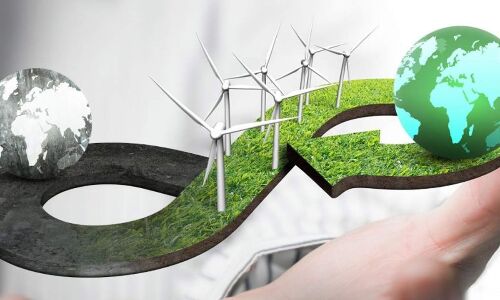Revisiting the link between circularity and sustainabilityRevisiting the link between circularity and sustainabilityA circular economy has often been spoken of in relation to sustainability. The idea of a circular economy, simply put, is to optimize utilization of resources and eliminate waste. Sustainability, in its much quoted definition by the Brundtland Commission, is the ability to meet the needs of the present without compromising the ability of future generations to meet their own needs.
The two are linked in obvious ways, as the better use and reuse of resources and the limiting of waste goes against the unsustainable linear economic model of creating, using and discarding. However, it is necessary to go beyond this epidermal observation. As several experts have taken note, a circular economy might not mean the same thing as sustainability all the time.
Upon probing this dilemma, the first nuance to discern in the vastness in the scope of sustainability. Sustainability covers the impact and interaction of environmental, social and economic factors, as opposed to the circular economy, which might be related to other phenomena, but at its heart is an economic concept. Writing for Forbes, expert Rachel Meidl remarks that the circular economy is presumed to have the potential to interrupt the current linear economy of unsustainable production, consumption, and waste generation by encouraging system innovation that designs out waste, increases resource efficiency, keeps materials in use, and decouples growth from the consumption of finite resources – thereby achieving a healthier balance between the economy, the environment, and society.
The ultimate objective is to transition to a regenerative circular system where the societal value of products, materials, and resources is maximized over time. She goes on to specify, however, that this might not encompass the width of sustainable development, by using the example of alternatives to plastics which performed poorly from an energy and resource standpoint. Therefore, the crucial distinction to make is that a circular economy is likely to contribute to sustainability but sustainability is not the same thing as circularity.
At its best, endeavours in the circular economy can lead to sustainable outcomes and we must ensure the consolidation of that pattern, and curb the straying away of circularity from sustainability. One reason why circular economies might not necessarily lead to sustainable practices is definitional ambiguity. As Science Direct reports, a possible cause for the wide variety of circularity metrics may lay in the unclear and diverse understanding of the concept by different stakeholders.
Ideally, the design of such a metric or framework should start from the definition of circular economy, which should be in line with the ultimate goal: to achieve sustainable development. However, even though the concept was already coined several decades ago, its definition and conceptualization is still an open matter and although most of the definitions depict circular economy as applying the 3R principles, some of them failed to notice the necessity of a systemic change. Therefore, definitional coherence is crucial for the circular economy to lead to sustainable growth and development.
As per Julian Kirchherr, Denise Reike and Marko Hekkert in an issue of Elsevier, the circular economy ideally is an, “economic system that replaces the ‘end-of-life’ concept with reducing, alternatively reusing, recycling and recovering materials in production/distribution and consumption processes […] with the aim to accomplish sustainable development, thus simultaneously creating environmental quality, economic prosperity and social equity, to the benefit of current and future generations. ” When such an approach is agreed upon, the simultaneity of circularity and sustainability can truly be accomplished. Consider the example of maximising waste prevention in relation to the aforementioned argument.
If the recycling of plastic is done through underpaying socioeconomically vulnerable actors for collecting and processing waste, it goes away from the sustainable goal of social equity. However, if similar efforts are made, keeping social disparities in mind and giving people their due, then this attempt towards circularity does not remain an elitist configuration that benefits from the disempowerment of certain people. Instead, it becomes committed to systemic change and sustainable development in its most genuine sense.
On the whole, looking at sustainability and the circular economy separately enables us to challenge simplistic misconceptions and blindspots and link the two in more meaningful ways. When the circular economy embraces sustainability in its holistic sense, what we will accomplish is an environmentally secure, economically progressive and socially equitable world. (The author is Chief Impact Officer at Recykal Foundation).
From: thehansindia
URL: https://www.thehansindia.com/business/revisiting-the-link-between-circularity-and-sustainability-756723
